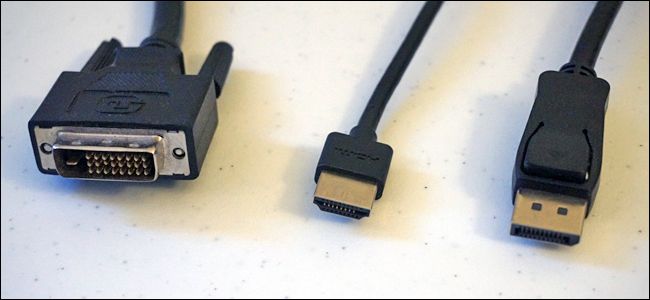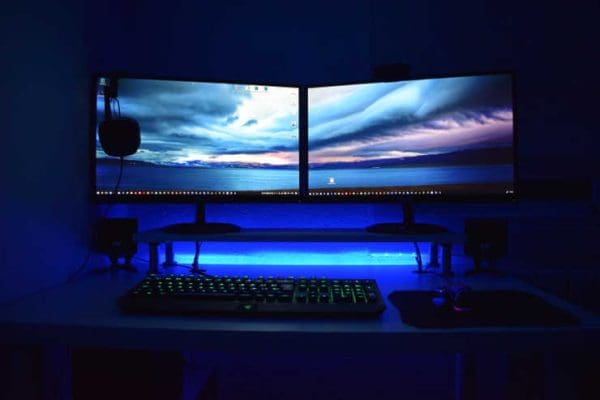
#Dvi d setup tv#
Until a few minutes ago the only ' work-around ' that I was aware of was to disconnect the HDMI cable going to the 4k TV and I'm reluctant to have to do that too often as I'm not convinced how long the HDMI connections would hold-up.
#Dvi d setup windows#
that was a problem because I must be able to intervene during the boot process and ' tell ' GRUB to start-up Windows and not LINUX.

#Dvi d setup Pc#
What I didn't like was that my new graphics card would send BIOS boot-up video to the 4K TV whenever it was connected to the HDMI port (of the graphics card) instead of to my PC monitor (hooked-up to the DVI-D connector on the graphics card). Sometimes there are simple ' work-arounds '. so sending audio to the TV along with video isn't a concern.)Ĭlick to expand.I've just ' conducted an experiment '. I drive a couple of bookshelf speakers directly off the PC's sound system. Note: I don't use the speakers in the TV. If such adaptors are available, and if my idea about the HDMI port is correct, then driving the computer monitor off the HDMI port would appear to offer a solution. (Would HDMI-to-DVI and DVI-to-HDMI adaptors work ? Drive the computer monitor off the HDMI port and the 4K TV off the DVI-D port ? I'm assuming that the graphics card always ' wants ' to send video out the HDMI port if anything is connected. I spoke with a guy at ASUS this afternoon and he said that there's no way to ' tell ' the graphics card to send video out the DVI-D port when there's something connected to the HDMI port (and before Windows is up-and-running). Once Windows is running the Display selections (under Windows) work as expected. The only way that I've been able to work-around this up-until-now is to unplug the HDMI connector, boot the PC, and then plug the HDMI connector back in. There's a point in the boot-up where, if I don't actively intervene, the PC will boot into LINUX.
#Dvi d setup windows 7#
the reason that I must see the boot sequence is that I have a GRUB loader that allows me to selectively boot into either Windows 7 or LINUX. I don't want to have to have the 4K monitor on every time I boot the PC (which isn't too often I'll admit. The GTX730's limitation was that it couldn't ' drive ' the 4K TV in better than 1080P.) (The old graphics card was a GTX730 - it had no problem sending video to the DVI-D interfacing monitor during the BIOS boot sequence while the HDMI interfacing 4K TV was connected. (Since this is during the BIOS boot sequence the display selections that are made once Windows is running have no effect.) When the z600 is being booted the graphics card will ONLY send video to the HDMI connected 4K TV and NOT to the computer monitor that's connected via the DVI-D port. The Dual-Link connectors utilize all 24 pins, which allow for higher bandwidth.ĭual-Link DVI can support a screen resolution up to 2560×1600 at 60Hz or 1920×1080 at 144Hz, whereas Single-Link DVI maxes out at 1920×1200 at 60Hz.I've got an HP z600 (Win 7 64) and just recently bought-and-installed an ASUS GTX1650 graphics card to see if it would drive a 4K monitor that's about a month old.ĭriving the 4K monitor (connected via the graphics card's HDMI port) is a success but I've run into an irritant. Now, DVI is the most versatile connector, as it can be used with HDMI, VGA and DisplayPort devices by using proper adapters. DVI-I vs DVI-D vs DVI-Aįor every graphics card or motherboard that has a DVI connector, the amount of pins and layout of the pins on the DVI connector differs depending on its type. Lastly, there’s the DVI-A connector, which can only carry out an analog signal, but these are obsolete nowadays.


The DVI-D cable will only read the digital output from the DVI-I connector and simply ignore the analog signal. Graphics cards and motherboards which carry a DVI-I connector are therefore fully compatible with LCD monitors, which typically have DVI-D ports. In contrast, a DVI-I connector can send both digital signals (for digital displays, such as LED-backlit LCD monitors) and analog signals (for older displays, such as a CRT monitor) using a DVI to VGA adapter.įor this reason, a DVI-I connector contains more pins than a DVI-D connector.

So, as we have already mentioned, a DVI-D connector sends out a digital signal only. In the picture below, the DVI connector is colored white as opposed to the VGA connector, which is colored blue. Most graphics cards and motherboards include a Digital Video Interface (DVI) connector for connecting a monitor or projector to the computer. A DVI-D connector sends out a digital signal while a DVI-I connector can send out both a digital and an analog signal.Ī DVI-D cable is fully compatible with a DVI-I connector - it will only read the digital output and simply ignore the analog.


 0 kommentar(er)
0 kommentar(er)
